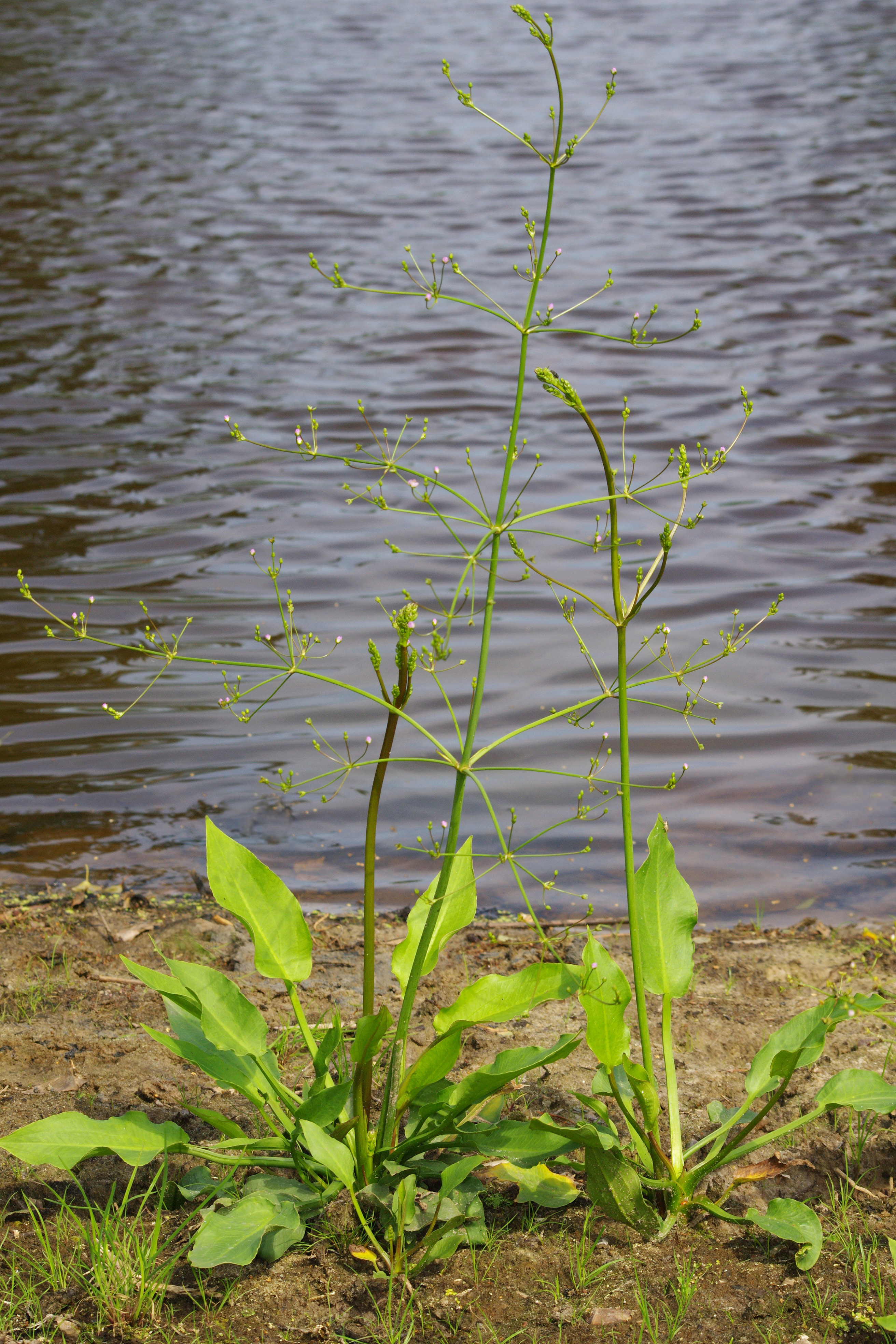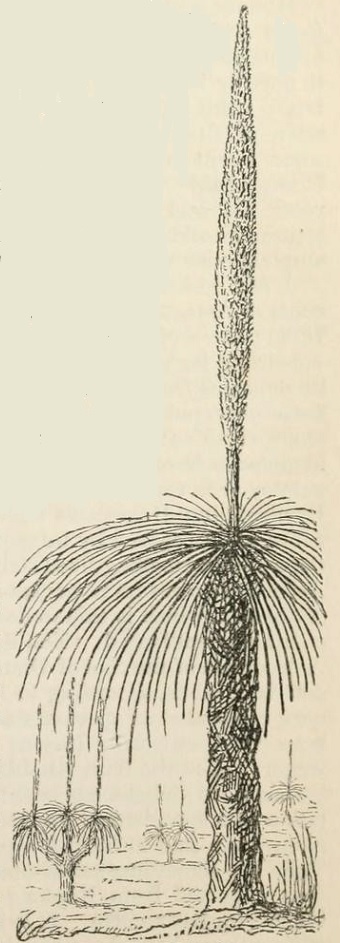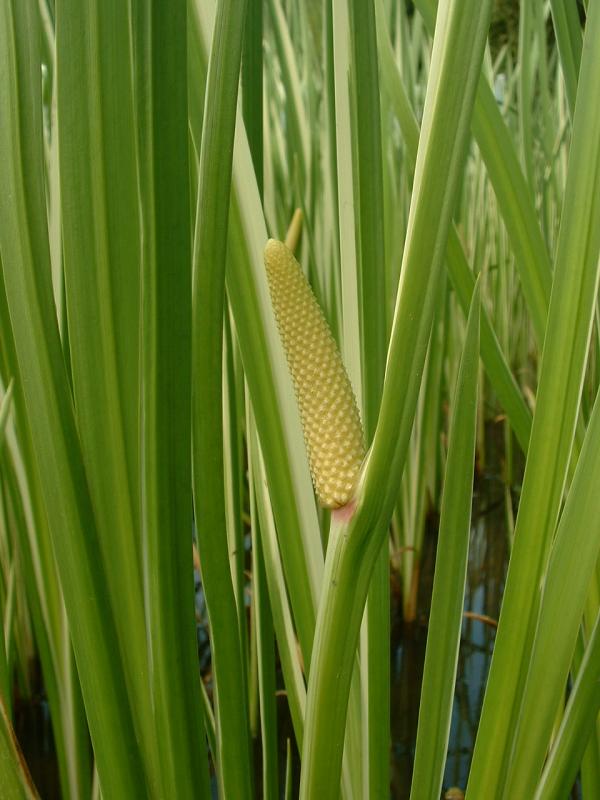|
Alismatid
Alismatid monocots (alismatids, basal monocots) is an informal name for a group of early branching (hence basal) monocots, consisting of two orders, the Acorales and Alismatales. The name has also been used to refer to the Alismatales alone. Monocots are frequently treated as three informal groupings based on their branching from ancestral monocots and shared characteristics: alismatid monocots, lilioid monocots (the five other non-commelinid monocots) and commelinid monocots. Research at the Royal Botanical Gardens, Kew is organised into two teams I: Alismatids and Lilioids and II: Commelinids. A similar approach is taken by Judd in his ''Plant systematics''. Phylogeny Cladogram showing the orders of monocots (Lilianae ''sensu'' Chase & Reveal) based on molecular phylogenetic evidence according to the Angiosperm Phylogeny Group IV (APG IV). Subdivision Of the two orders, the Acorales is monotypic, consisting of a single family, the Acoraceae, which in turn has a ... [...More Info...] [...Related Items...] OR: [Wikipedia] [Google] [Baidu] |
Lilioid Monocots
Lilioid monocots (lilioids, liliid monocots, petaloid monocots, petaloid lilioid monocots) is an informal name used for a grade (biology), grade (grouping of taxa with common characteristics) of five monocot order (biology), orders (Petrosaviales, Dioscoreales, Pandanales, Liliales and Asparagales) in which the majority of species have flowers with relatively large, coloured tepals. This characteristic is similar to that found in Lilium, lilies ("lily-like"). Petaloid monocots refers to the flowers having tepals which all resemble petals (petaloid). The taxonomic terms Lilianae or Liliiflorae have also been applied to this assemblage at various times. From the early nineteenth century many of the species in this group of plants were put into a very broadly defined family, Liliaceae ''sensu lato'' or ''s.l.'' (lily family). These classification systems are still found in many books and other sources. Within the monocots the Liliaceae ''s.l.'' were distinguished from the Glumaceae. ... [...More Info...] [...Related Items...] OR: [Wikipedia] [Google] [Baidu] |
Liliales
Liliales is an order (biology), order of monocotyledonous flowering plants in the Angiosperm Phylogeny Group and Angiosperm Phylogeny Web List of systems of plant classification, system, within the lilioid monocots. This order of necessity includes the family (biology), family Liliaceae. The APG III system (2009) places this order in the monocot clade. In APG III, the family Luzuriagaceae is combined with the family Alstroemeriaceae and the family Petermanniaceae is recognized. Both the order Lililiales and the family Liliaceae have had a widely disputed history, with the circumscription (taxonomy), circumscription varying greatly from one taxonomist to another. Previous members of this order, which at one stage included most monocots with conspicuous tepals and lacking starch in the endosperm are now distributed over three orders, Liliales, Dioscoreales and Asparagales, using predominantly molecular phylogenetics. The newly delimited Liliales is monophyletic, with ten families. W ... [...More Info...] [...Related Items...] OR: [Wikipedia] [Google] [Baidu] |
Alismatales
The Alismatales (alismatids) are an order of flowering plants including about 4,500 species. Plants assigned to this order are mostly tropical or aquatic. Some grow in fresh water, some in marine habitats. Perhaps the most important food crop in the order is the taro plant, ''Colocasia esculenta''. Description The Alismatales comprise herbaceous flowering plants of often aquatic and marshy habitats, and the only monocots known to have green embryos other than the Amaryllidaceae. They also include the only marine angiosperms growing completely submerged, the seagrasses. The flowers are usually arranged in inflorescences, and the mature seeds lack endosperm. Both marine and freshwater forms include those with staminate flowers that detach from the parent plant and float to the surface. There they can pollinate carpellate flowers floating on the surface via long pedicels. In others, pollination occurs underwater, where pollen may form elongated strands, increasing chance of suc ... [...More Info...] [...Related Items...] OR: [Wikipedia] [Google] [Baidu] |
Commelinid Monocots
In plant taxonomy, commelinids (originally commelinoids) is a clade of flowering plants within the monocots, distinguished by having cell walls containing ferulic acid. Well-known commelinids include palms and relatives (order Arecales), dayflowers, spiderworts, kangaroo paws, and water hyacinth (order Commelinales), grasses, bromeliads, rushes, and sedges (order Poales), ginger, cardamom, turmeric, galangal, bananas, plantains, and bird of paradise flower (order Zingiberales). The commelinids are the only clade that the APG IV system has informally named within the monocots. The remaining monocots are a paraphyletic unit. Also known as the commelinid monocots it forms one of three groupings within the monocots, and the final branch; the other two groups are the alismatid monocots and the lilioid monocots. Description Members of the commelinid clade have cell walls containing UV- fluorescent ferulic acid. Taxonomy and Phylogeny The commelinids constitute a we ... [...More Info...] [...Related Items...] OR: [Wikipedia] [Google] [Baidu] |
Monocots
Monocotyledons (), commonly referred to as monocots, ( Lilianae '' sensu'' Chase & Reveal) are flowering plants whose seeds contain only one embryonic leaf, or cotyledon. A monocot taxon has been in use for several decades, but with various ranks and under several different names. The APG IV system recognises its monophyly but does not assign it to a taxonomic rank, and instead uses the term "monocots" to refer to the group. Monocotyledons are contrasted with the dicotyledons, which have two cotyledons. Unlike the monocots however, the dicots are not monophyletic and the two cotyledons are instead the ancestral characteristic of all flowering plants. Botanists now classify dicots into the eudicots ("true dicots") and several basal lineages from which the monocots emerged. The monocots are extremely important economically, culturally, and ecologically, and make up a majority of plant biomass used in agriculture. Common crops such as dates, onions, garlic, rice, wheat, maize, and ... [...More Info...] [...Related Items...] OR: [Wikipedia] [Google] [Baidu] |
Asparagales
Asparagales (asparagoid lilies) are a diverse order of flowering plants in the monocots. Under the APG IV system of flowering plant classification, Asparagales are the largest order of monocots with 14 families, 1,122 genera, and about 36,000 species, with members as varied as asparagus, orchids, yuccas, irises, onions, garlic, leeks, and other Alliums, daffodils, snowdrops, amaryllis, agaves, butcher's broom, Agapanthus, Solomon's seal, hyacinths, bluebells, spider plants, grasstrees, aloe, freesias, gladioli, crocuses, and saffron. Most species of Asparagales are herbaceous perennials, although some are climbers and some are trees or shrubs. The order also contains many geophytes (bulbs, corms, and various kinds of tuber). The leaves of almost all species form a tight rosette, either at the base of the plant or at the end of the stem, but occasionally along the stem. The flowers are not particularly distinctive, being 'lily type', with six tepals and ... [...More Info...] [...Related Items...] OR: [Wikipedia] [Google] [Baidu] |
Royal Botanic Gardens, Kew
Royal Botanic Gardens, Kew is a non-departmental public body in the United Kingdom sponsored by the Department for Environment, Food and Rural Affairs. An internationally important botanical research and education institution, it employs 1,100 staff. Its board of trustees is chaired by Dame Amelia Fawcett. The organisation manages botanic gardens at Kew in Richmond upon Thames in south-west London, and at Wakehurst, a National Trust property in Sussex which is home to the internationally important Millennium Seed Bank, whose scientists work with partner organisations in more than 95 countries. Kew, jointly with the Forestry Commission, founded Bedgebury National Pinetum in Kent in 1923, specialising in growing conifers. In 1994, the Castle Howard Arboretum Trust, which runs the Yorkshire Arboretum, was formed as a partnership between Kew and the Castle Howard Estate. In 2019, the organisation had 2,316,699 public visitors at Kew, and 312,813 at Wakehurst. Its site ... [...More Info...] [...Related Items...] OR: [Wikipedia] [Google] [Baidu] |
Botanical Journal Of The Linnean Society
The ''Botanical Journal of the Linnean Society'' is a scientific journal publishing original papers relating to the taxonomy of all plant groups and fungi, including anatomy, biosystematics, cytology, ecology, ethnobotany, electron microscopy, morphogenesis, palaeobotany, palynology and phytochemistry.Botanical Journal of the Linnean Society The journal is published by the and is available in both print and searchable online formats. Like the '' Biological Journal of ... [...More Info...] [...Related Items...] OR: [Wikipedia] [Google] [Baidu] |
Acorus
''Acorus'' is a genus of monocot flowering plants. This genus was once placed within the family Araceae (aroids), but more recent classifications place it in its own family Acoraceae and order Acorales, of which it is the sole genus of the oldest surviving line of monocots. Some older studies indicated that it was placed in a lineage (the order Alismatales), that also includes aroids (Araceae), Tofieldiaceae, and several families of aquatic monocots (e.g., Alismataceae, Posidoniaceae). However, modern phylogenetic studies demonstrate that ''Acorus'' is sister to all other monocots. Common names include calamus and sweet flag. The genus is native to North America and northern and eastern Asia, and naturalised in southern Asia and Europe from ancient cultivation. The known wild populations are diploid except for some tetraploids in eastern Asia, while the cultivated plants are sterile triploids, probably of hybrid origin between the diploid and tetraploid forms. Characteris ... [...More Info...] [...Related Items...] OR: [Wikipedia] [Google] [Baidu] |
Monotypic Taxon
In biology, a monotypic taxon is a taxonomic group (taxon) that contains only one immediately subordinate taxon. A monotypic species is one that does not include subspecies or smaller, infraspecific taxa. In the case of Genus, genera, the term "unispecific" or "monospecific" is sometimes preferred. In botanical nomenclature, a monotypic genus is a genus in the special case where a genus and a single species are simultaneously described. Theoretical implications Monotypic taxa present several important theoretical challenges in biological classification. One key issue is known as "Gregg's Paradox": if a single species is the only member of multiple hierarchical levels (for example, being the only species in its genus, which is the only genus in its family), then each level needs a distinct definition to maintain logical structure. Otherwise, the different taxonomic ranks become effectively identical, which creates problems for organizing biological diversity in a hierarchical o ... [...More Info...] [...Related Items...] OR: [Wikipedia] [Google] [Baidu] |
Commelinales
Commelinales is an order of flowering plants. It comprises five families: Commelinaceae, Haemodoraceae, Hanguanaceae, Philydraceae, and Pontederiaceae. All the families combined contain over 885 species in about 70 genera; the majority of species are in the Commelinaceae. Plants in the order share a number of synapomorphies that tie them together, such as a lack of mycorrhizal associations and tapetal raphides. Estimates differ as to when the Commelinales evolved, but most suggest an origin and diversification sometime during the mid- to late Cretaceous. Depending on the methods used, studies suggest a range of origin between 123 and 73 million years, with diversification occurring within the group 110 to 66 million years ago. The order's closest relatives are in the Zingiberales, which includes ginger, bananas, cardamom, and others.Stevens, P. F. (2001 onwards). Angiosperm Phylogeny Website. Version 9, November 2011. Taxonomy According to the most recent classification ... [...More Info...] [...Related Items...] OR: [Wikipedia] [Google] [Baidu] |




